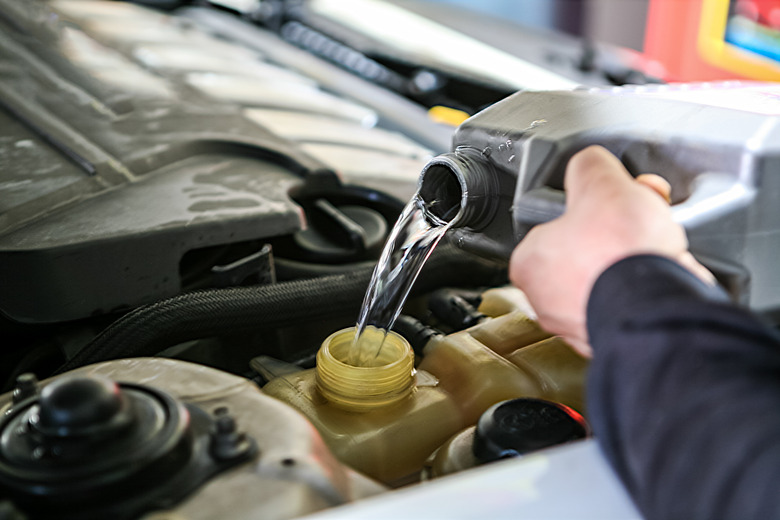Polyethylene Glycol Vs. Ethylene Glycol
Sometimes two compounds have similar-sounding names but would be disastrous if confused. Polyethylene glycol and ethylene glycol are two of these substances. While the first is a common ingredient in medications, the latter is a highly toxic industrial product.
TL;DR (Too Long; Didn't Read)
Although they have similar-sounding names, polyethylene glycol and ethylene glycol are very different compounds. In controlled amounts, polyethylene glycol is not harmful if ingested and is an ingredient in laxative medications. Ethylene glycol, by contrast, is very toxic and is best known for its use in antifreeze and deicer solutions.
Polyethylene Glycol Characteristics
Polyethylene Glycol Characteristics
Polyethylene glycol is a polyether compound, meaning that it consists of multiple ether groups. Depending on its molecular weight, polyethylene glycol may have different appearances. Below a molecular weight of 700, it is an opaque liquid. At molecular weights between 700 and 900, polyethylene glycol is a semisolid. Over a molecular weight of 900, it can be a white waxy solid, flakes or a powder. Polyethylene glycol appears in a large range of chemical, biological, commercial, industrial and medical applications.
Polyethylene Glycol Uses
Polyethylene Glycol Uses
The most common medical use of polyethylene glycol is as a laxative, usually called MiraLAX in over-the-counter preparations. A more intense version of the same laxative plays a role in colonoscopy and barium-enema solutions. When combined with electrolytes to prevent dehydration, polyethylene glycol causes a watery diarrhea that clears out the colon, allowing doctors to get a clear view of the organ.
Ethylene Glycol Characteristics
Ethylene Glycol Characteristics
Ethylene glycol is a toxic organic compound. At room temperature, it appears in a liquid state. It is odorless and colorless and has a sweet taste. Even small amounts of this compound are harmful if ingested and may lead to shock or even death. Consuming just 4 fluid ounces is enough to cause fatality in a large adult.
Ethylene Glycol Uses
Ethylene Glycol Uses
Ethylene glycol appears in many common household items, such as laundry detergent, dishwasher detergent, cosmetics and paint. Ethylene glycol also serves as an antifreeze and a hydraulic brake fluid additive for automobiles. In addition, it sometimes functions as a deicing agent for runways and planes. The use of this compound as a deicer and antifreeze agent leads to concerns of environmental contamination due to improper disposal and incidental runoff.
Polyethylene glycol and ethylene glycol are two very different substances with very similar names, which may cause confusion. One compound is helpful for medical applications while the other compound is fatal if ingested.
Cite This Article
MLA
Michelle, Meg. "Polyethylene Glycol Vs. Ethylene Glycol" sciencing.com, https://www.sciencing.com/polyethylene-glycol-vs-ethylene-glycol-5977662/. 21 May 2018.
APA
Michelle, Meg. (2018, May 21). Polyethylene Glycol Vs. Ethylene Glycol. sciencing.com. Retrieved from https://www.sciencing.com/polyethylene-glycol-vs-ethylene-glycol-5977662/
Chicago
Michelle, Meg. Polyethylene Glycol Vs. Ethylene Glycol last modified March 24, 2022. https://www.sciencing.com/polyethylene-glycol-vs-ethylene-glycol-5977662/
